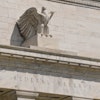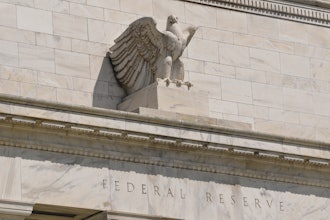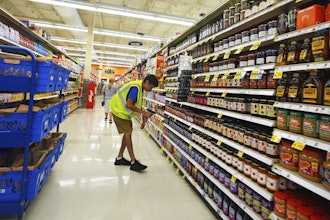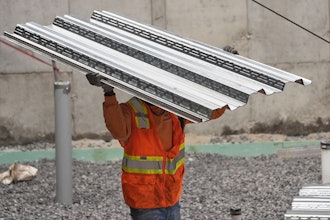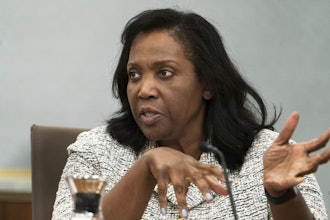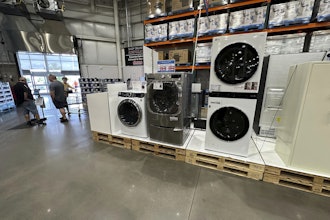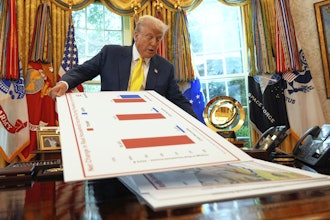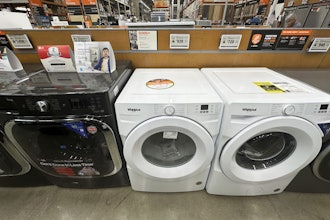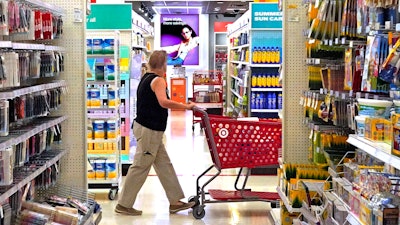
WASHINGTON (AP) — A flow of recent data from the U.S. government has made one thing strikingly clear: A surge in consumer spending is fueling strong growth, demonstrating a resilience that has confounded economists, Federal Reserve officials and even the sour sentiments that Americans themselves have expressed in opinion polls.
Spending by consumers rose by a brisk 0.4% in September the government said Friday — even after adjusting for inflation and even as Americans face ever-higher borrowing costs.
Economists caution that such vigorous spending isn't likely to continue in the coming months. Many households have been pulling money from a shrinking pool of savings. Others have been turning increasingly to credit cards. And the additional savings that tens of millions of households amassed during the pandemic — from stimulus aid and reduced opportunities to travel, dine out and visit entertainment venues — are nearly depleted, economists say.
Still, the truth is no one knows where things go from here, given the unusual nature of the post-pandemic economy. The "death of the consumer" and an ensuing recession have been forecast by most economists for at least a year. So far, not only is no recession in sight but consumers as a whole appear to be in robust health. Spending might cool in the coming months, yet it's far from clear it will collapse.
On Thursday, the government said the economy accelerated at a 4.9% annual rate in the July-September quarter, the fastest such rate since 2021, on the back of a jump in Americans' spending. People spent on used cars and restaurant meals, airfares and hotel rooms. Much of it, even after adjusting for higher prices, was for discretionary items that suggested that many people feel confident in their finances and job security.
The durability of that spending has caught the attention of Fed officials, who have signaled that they will keep their key interest rate unchanged when they meet this week. But they've also made clear that they are monitoring the economic data for any sign that inflation could reignite and require further rate hikes.
"I have been consistently surprised at the resilience of consumer spending," Christopher Waller, an influential member of the Fed's board, said in a speech this month.
In the meantime, businesses, especially those in the sprawling service sector, are benefiting from what still appears to be pent-up demand, likely driven by higher-income earners, after the restrictions of the pandemic. Last week, Royal Caribbean Group reported robust quarterly earnings. Travelers crowded their cruise ships and spent more even as the company raised prices.
"The acceleration of consumer spending on experiences (has) propelled us towards another outstanding quarter," said CEO Jason Liberty. "Looking ahead, we see accelerating demand."
So what's behind the outsize gains, so far? Economists point to several drivers: Sturdy hiring and low unemployment, along with healthy finances for most households emerging from the pandemic. Wealthier households, in particular, have enjoyed substantial growth in home values and stock portfolios, which are likely juicing their spending.
Steady hiring has sent the unemployment rate down to a near-five-decade low of 3.8% and lifted to a record high the proportion of women in their prime working years — ages 25 through 54 — who are employed. Measures of layoffs are near historical lows. More jobs mean more income, which generally means more spending.
"We continue to believe that you shouldn't bet against the consumer until actual job losses are on the horizon," said Tim Duy, chief U.S. economist at SGH Macro Advisers.
In the July-September quarter, Americans ramped up spending on durable goods — furniture, appliances, jewelry and luggage — that people typically cut back on if they're worried about their jobs or the economy.
With inflation slowing — it's at a still-high 3.7%, down from a peak of 9.1% in June 2022 — average wages are starting to outpace price gains. By some measures, wage growth hasn't yet fully offset the inflation surge that began in 2021. But since late last year, pay has risen faster than prices, likely fueling some spending.
In many lower-paying industries, like hotels, restaurants and warehouses, companies have struggled to find and keep workers and have raised pay accordingly. Julia Pollak, chief economist at ZipRecruiter, calculates that for the lowest-paid 10% of workers, wages have jumped 25% since the first quarter of 2020, when the pandemic began. That's well ahead of the 18% increase in prices over that time.
And most households started 2023 in better shape than they were in before the pandemic erupted, according to a report from the Fed. The net worth of the median household — the midpoint between the richest and poorest — jumped 37% from 2019 through 2022 as home prices shot higher and the stock market rose. That was the biggest surge on records dating back more than 30 years.
Most of the savings that Americans have accumulated in the past three years have flowed to the wealthiest households, who have splurged on travel and other experiences. Typically, economists say, the wealthiest one-fifth of Americans account for about two-fifths of all spending.
The net worth of the richest one-tenth of households leaped by $28 trillion — or about one-third — from the first quarter of 2020 to the second quarter of 2023, according to the Fed. The poorer one-half of Americans gained a bigger percentage increase but in total dollars much less, from about $2 trillion to $3.6 trillion. (Those figures aren't adjusted for inflation.)
"When wealth is growing by the amount that it has been the past three years ... I do think that it's playing a larger role in this spending strength than maybe we thought it would," said Sarah Wolfe, U.S. economist at Morgan Stanley.
Small-business owners like Bret Csencsitz, managing partner of Gotham Restaurant in New York City, can attest to that. High-dollar spending by middle-age customers has helped replace many of his older patrons who moved out of the city during COVID. These customers, who typically work in technology and finance, are buying $150 to $200 bottles of wine and spending a little over $200 on steak for two.
The average per-person check is up over 20% to roughly $145 compared with the pre-pandemic days, he added, and he has had groups of up to 60 people holding dinners at his restaurant.
"People are back," he said. "There's more energy."
Aditya Bhave, senior economist at Bank of America, noted that the spending isn't all driven by the affluent. Spending on the bank's credit and debit cards by households with incomes below $50,000 has risen faster than spending by higher-earning clients.
Some Americans, while keeping a close watch on their finances, still feel they have room to indulge themselves. Consider Valerie Zaffina, a 74-year-old retired teacher who was picking up a piece of jewelry last week at a Kohl's store in Ramsey, New Jersey. She said she and her husband live on fixed incomes and are cautious spenders.
But Zaffina has nevertheless decided on one big splurge — about $5,000 to decorate her rental apartment, including a $2,500 couch and a $600 rug. It's her first major decorating project in 18 years.
"I had kind of a frustrating year, and I wanted to do something for myself," she said. "So, yeah, I'm redecorating. I'm in the throes of that, but I'm sticking to a budget."
Many analysts still warn of a new crop of headwinds facing consumers and the economy. Nearly 30 million student loan borrowers had to start paying their loans this month, for example. And government dysfunction in Washington could lead to a government shutdown next month.
A report Friday showed that while inflation-adjusted income fell last month along with the savings rate, consumers still ramped up their spending. That trend, economists say, is unsustainable.
Even so, those challenges may not prove as damaging as feared. Student loan payments, for example, jumped even before an Oct. 1 deadline for resuming them, Bhave noted. And few borrowers appear to have taken advantage of a 12-month grace period the Biden administration put in place, suggesting that most borrowers can afford to resume paying the money back — at least for now.
And executives at Visa, which reported strong earnings and a surge of spending by their U.S. credit card customers overseas in the third quarter, have also downplayed the likely impact of student loan repayments.
The company isn't "factoring in any impacts" from loan repayments "because we've yet to see any meaningful impact," said Visa's chief financial officer, Christopher Suh. "Consumer spending across all segments from high to low has remained stable since March."
"There's a lot of gloom and doom," around the consumer, Bhave said. "And yet the data keep surprising to the upside."


